#porto real estate portugal
Text
Swordfish Portuguese

Website: https://www.swordfishportuguese.com
Address : Porto, Portugal
Swordfish Portuguese specializes in real estate investments, focusing on buying and reselling properties. Established in September 2020, the company is known for its professionalism, trustworthiness, and honesty. Operating primarily in Porto, Portugal, they offer unique opportunities in a country celebrated for its beautiful landscapes, rich gastronomy, and friendly people. Their services include energy certification and a commitment to high ethical standards and quality in their investment and management processes.
Twitter: https://twitter.com/Radio_Swordfish
Keywords:
portugal real estate
portugal real estate for sale
porto portugal real estate
real estate porto portugal
real estate in porto portugal
professional real estate services
portugal property investment
luxury real estate portugal
porto portugal real estate for sale
real estate for sale in porto portugal
real estate in porto portugal for sale
porto real estate for sale
porto rico real estate
portugal porto real estate
investment property in portugal
professional leasing & real estate services
porto real estate portugal
portugal property market
porto covo portugal real estate
porto portugal real estate for rent
porto portugal real estate listings
porto santo portugal real estate
portugal real estate porto
real estate agents porto portugal
real estate for sale porto portugal
real estate in portugal porto
real estate near porto portugal
portugal investment property for sale
luxury real estate porto
porto cima real estate
porto cristo real estate
porto santo island real estate
porto investment property
luxury real estate porto portugal
real estate portugal porto
porto heli real estate for sale
buy real estate in porto portugal
commercial real estate porto portugal
porta da frente real estate portugal
porto portugal real estate sales
porto portugal real estate uk
real estate agents in porto portugal
real estate for sale foz portugal near porto
real estate in porto covo portugal
real estate in the porto region of portugal
real estate listings porto portugal
real estate outside of porto portugal
real estate outside of porto portugal campanha
real estate outside of porto portugal countryside
real estate outside of porto portugal rio tinto
real estate porto covo portugal
sotheby's real estate porto portugal
são martinho do porto portugal real estate
real estate management portugal
best property investment in portugal
buy investment property portugal
buying investment property in portugal
portugal residence property investment
property market in portugal
property market portugal
investment property porto
property investment lisbon versus porto
#portugal real estate#portugal real estate for sale#porto portugal real estate#real estate porto portugal#real estate in porto portugal#professional real estate services#portugal property investment#luxury real estate portugal#porto portugal real estate for sale#real estate for sale in porto portugal#real estate in porto portugal for sale#porto real estate for sale#porto rico real estate#portugal porto real estate#investment property in portugal#professional leasing & real estate services#porto real estate portugal#portugal property market#porto covo portugal real estate#porto portugal real estate for rent#porto portugal real estate listings#porto santo portugal real estate#portugal real estate porto#real estate agents porto portugal#real estate for sale porto portugal#real estate in portugal porto#real estate near porto portugal#portugal investment property for sale#luxury real estate porto#porto cima real estate
1 note
·
View note
Text

I might fit your needs for investment...
#imobiliario portugal#alojamento local#investimento#real estate#imobilario#porto imobiliario#real estate in porto
0 notes
Text
Porto - Day 1
Sunday - 10/8
Our hotel includes a buffet breakfast
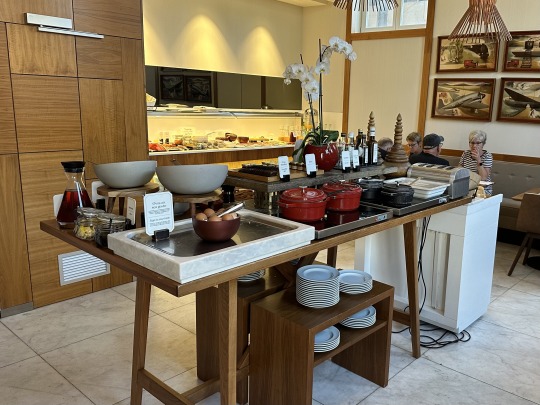
The weather in Porto was sunny today hitting a high of 83 degrees— very similar to Lisbon weather. Hopefully the nice weather keeps up for the rest of our trip. I have been wearing shorts the whole time in Portugal, except for two nights in Lisbon when the temperature dropped down to about 70 degrees.
Below is a photo of our hotel, the NH Collection Porto Batalha. It used to be a post office.
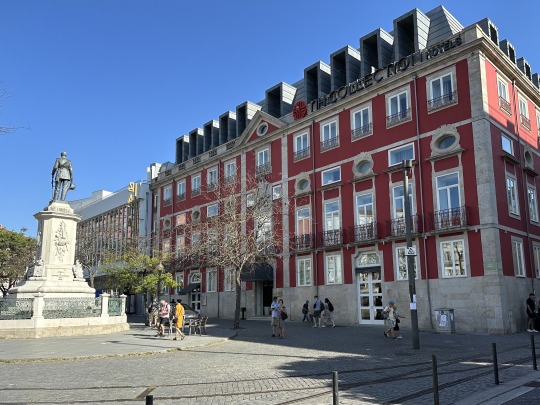
This morning we went on part 1 of a self-guided Rick Steves walking tour of Porto. This church was built in the first half of the 18th century on a mediaeval site. The tiles on the outside walls were added in 1932.
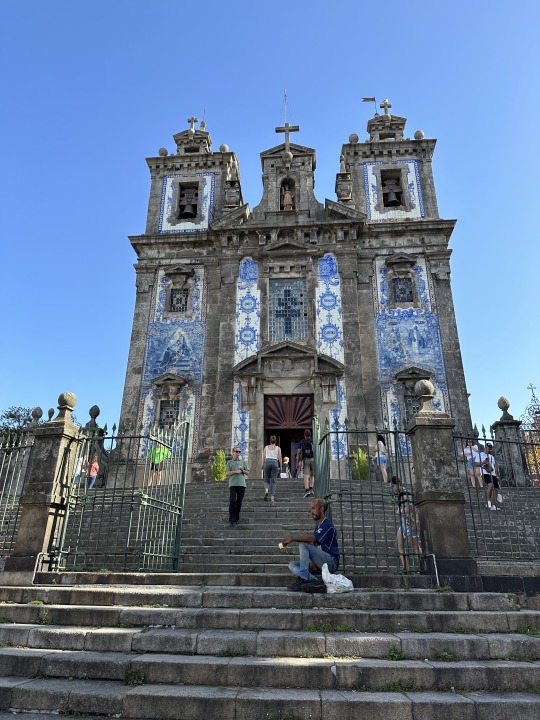
Here are some sights we saw along the way. The left picture below are “Dancers for Euros” :-). There are a lot of street artists in Portugal looking for tips. Some of them are very talented. The picture on the right is a church.
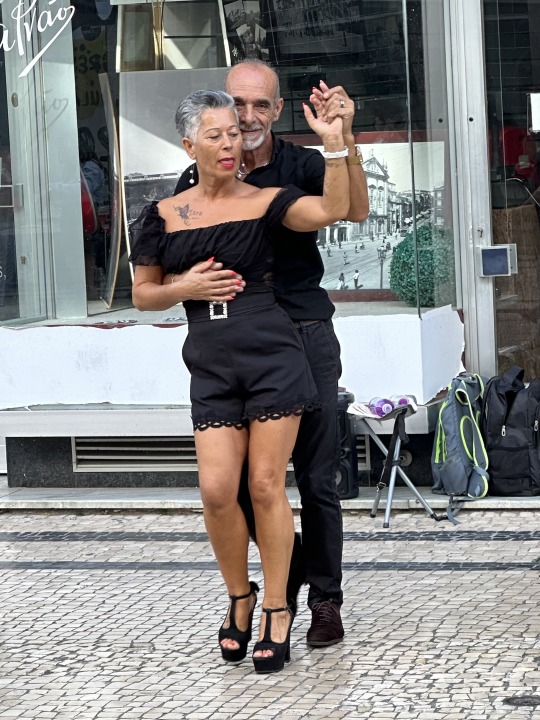

Here is a picture of Porto city hall.
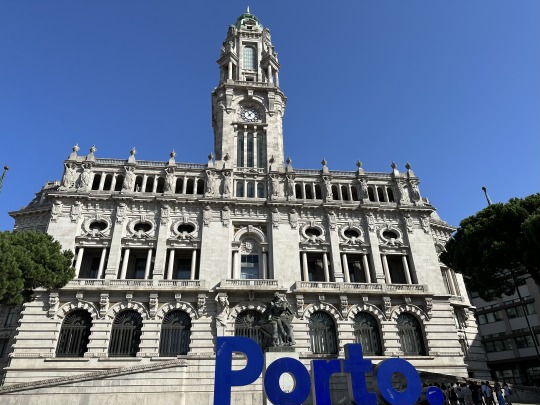
Porto has the only McDonalds in the world where you will find soup and a chandelier.
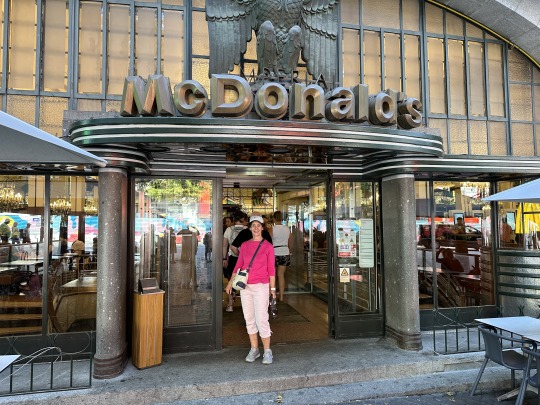


There is major construction going on in the center of Porto as they are building a new metro line. Some of the main streets are torn up and one trolley line is using buses instead to avoid the construction mess.
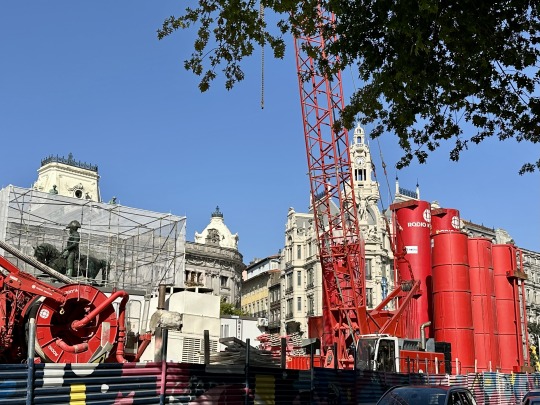
Along the way we stopped for a treat at Padaria Ribeiro, a pastry and bread shop.
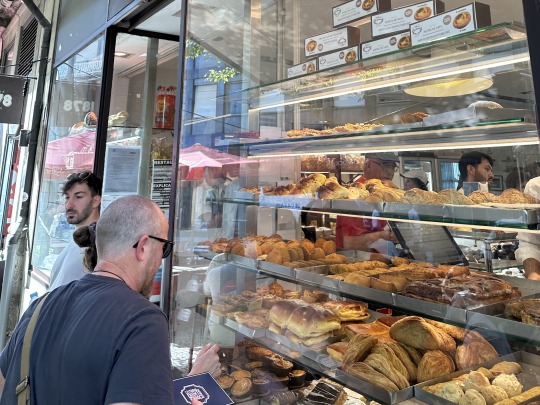

Here is a picture of Armazens Cunhad, a department store in Porto. It doesn’t appear to be as upscale as the El Corte Ingles department store we saw in Lisbon.

Two church’s and a narrow building between them.
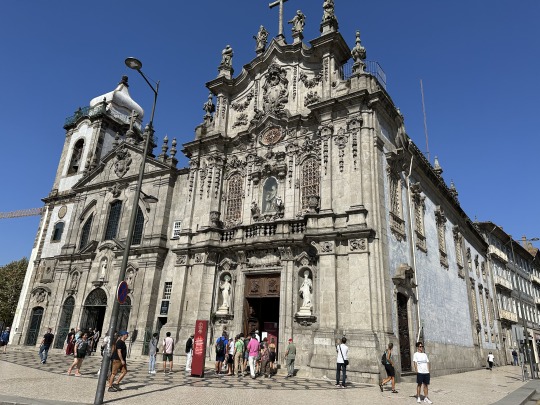
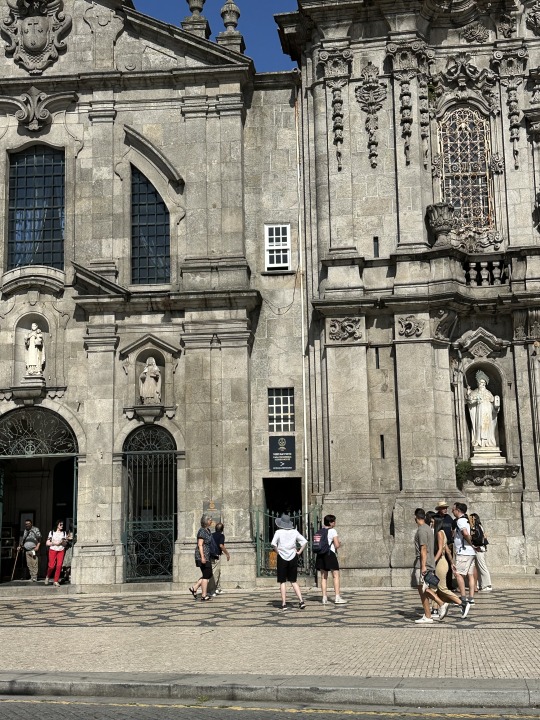
Lello Bookstore is considered the 3rd most beautiful bookstore in the world according to Lonely Planet. Rumor is that this bookstore inspired author J K Rollins to create Flourish and Blotts, the bookstore where Harry Potter buys his books before going to Hogwarts. We didn’t go inside because there was a long line and looked like it would take at least an hour in line.
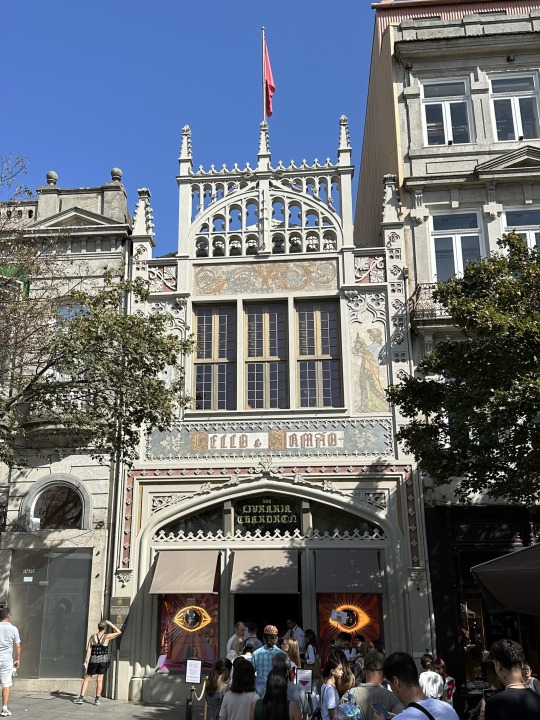
The picture below is of Clérigos Church and its 75 meter bell tower (Igreja e Torre dos Clérigos).
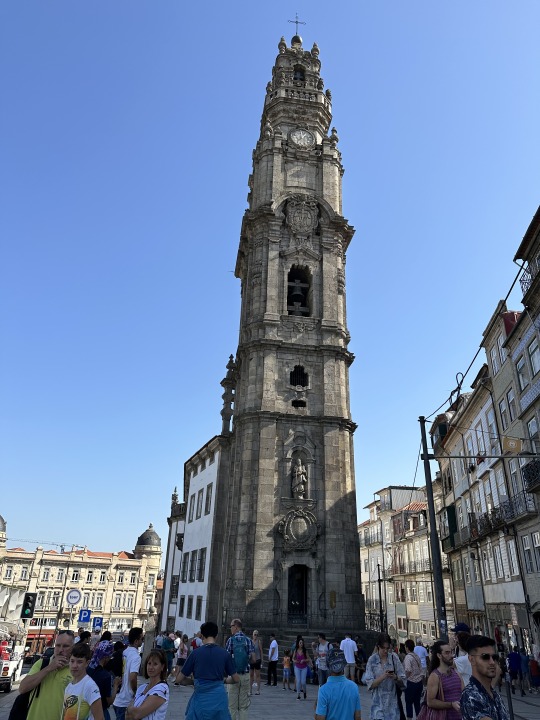
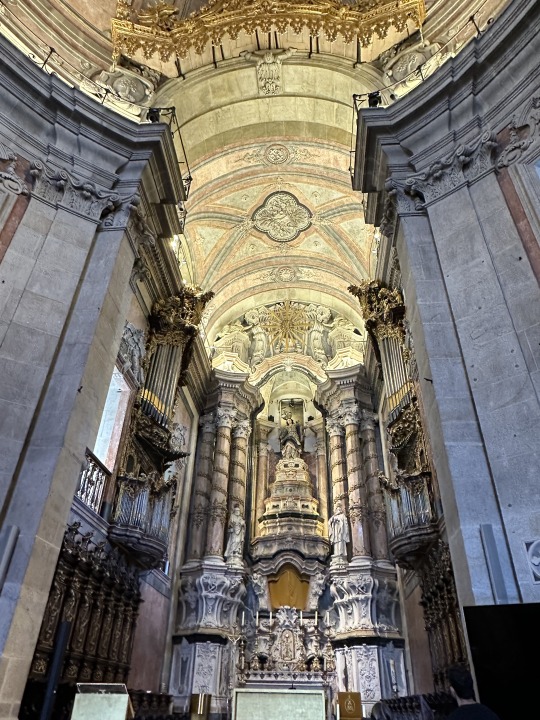
That concluded part 1 of our walking tour. We plan do part 2 another day. For lunch we brought packaged salads and ate them in the park. It was nice to get away from all the people, noise and congestion of the central Porto area we had been walking in.
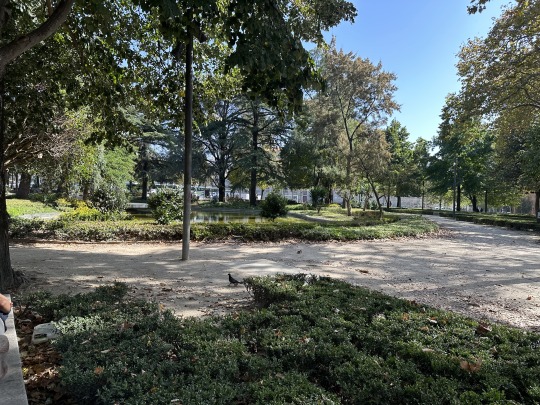
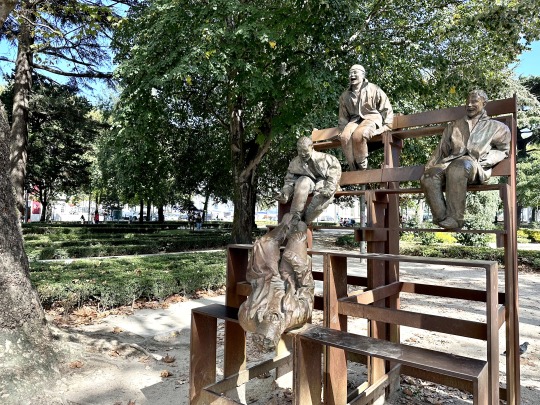
After lunch we decided to take a ride on the historic tram 18 to see more of Porto. We searched on the internet but could not find a map of the tram route. Same with when we tried to a find a bus route on a previous day. Our experience in Portugal is they sure don’t make it easy for tourists. Anyway we decided to follow the tracks to the end of the line, which wasn’t too far. It ended up being in front of Igreja e Torre dos Clérigos.
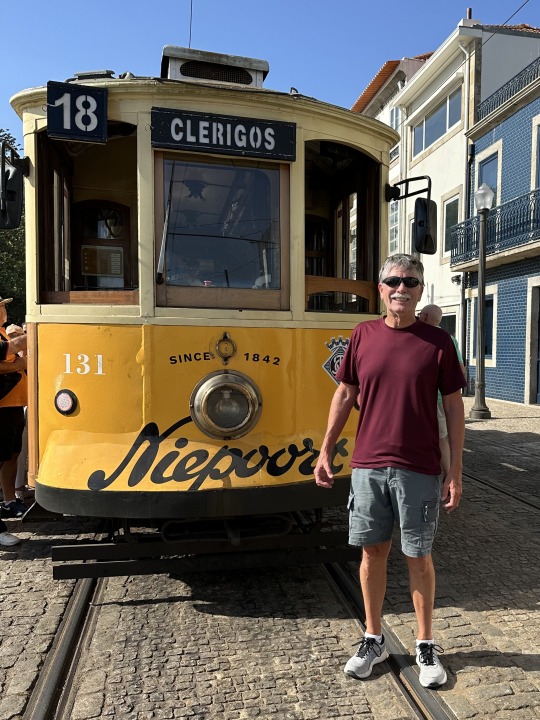
We rode tram 18 from one end to the other end, which was the neighborhood For do Duoro. The best view of the river when going this direction on the tram is to sit on left side (single seat side) of the tram.
For do Duoro Is where the Douro River meets the Atlantic Ocean. It’s like we went from Porto 1 to Porto 2. Totally different vibe in Porto 2. Less congestion and buildings are more modern. Slight ocean breeze. It is a more expensive area to live in Porto.



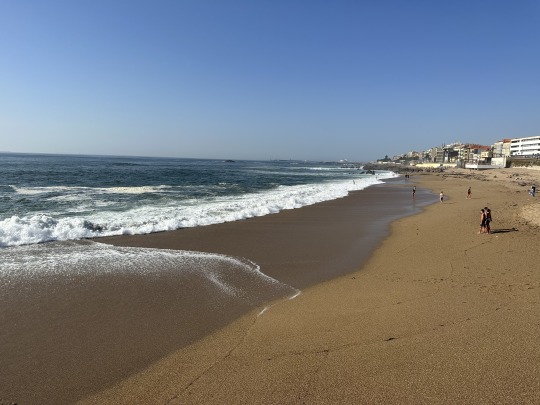

It was so beautiful we decided to hike back along the river.
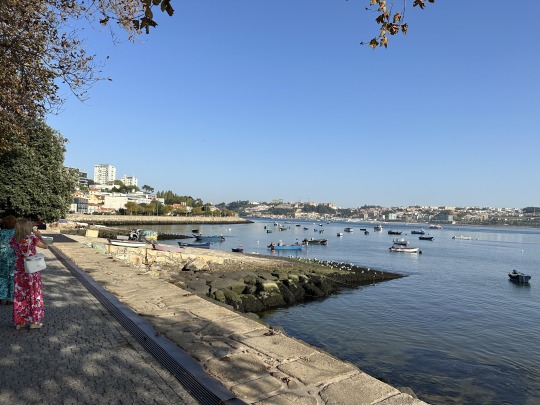
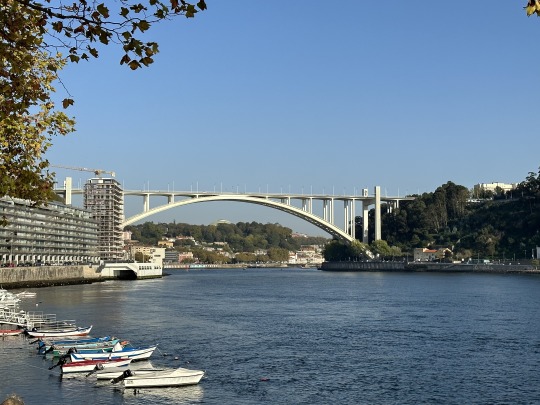
Real estate is not cheap in Porto, but seems less expensive than Lisbon. Here is a nice 1,240 square foot 3 bedroom 2 bathroom apartment with ocean views for €880,000.
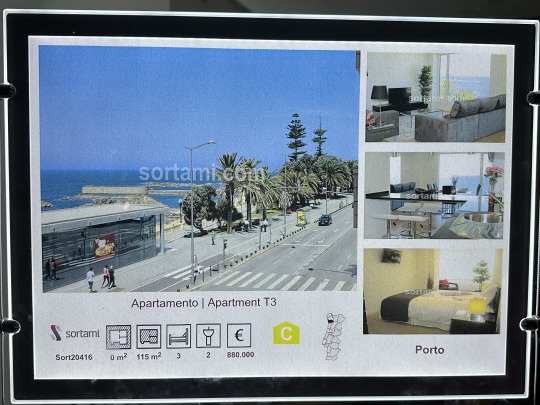
For dinner we both had Pregos (steak sandwiches) at Casa Da Companhia Restaurante.
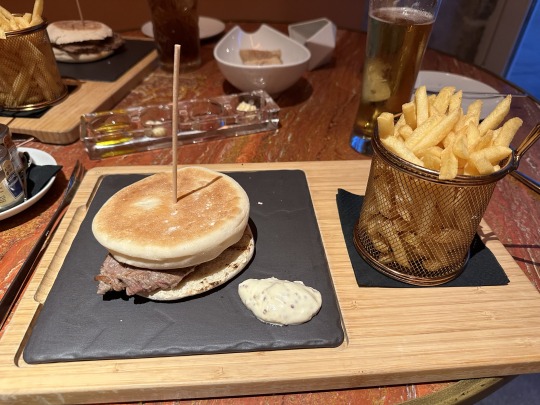
We did a lot of walking today… 23,500 steps which is the most we have walked on this trip in a single day. Our prior record was 22,900, which was the day we hiked out to Ponta da Piedade in Lagos.
0 notes
Text
When you name your YouTube seawall video How Vancouver’s Waterfront Became So Boring, subtlety is not your aim.
Even so, Uytae Lee‘s 11-minute mini-doc on one of the city’s world-famous gems got under a lot more people’s skin than the urban-planning filmmaker anticipated.
“It generated a lot of controversy in some circles,” Lee said. “I’m friends with quite a few urban planners in the city and I think there were some feathers ruffled.”
The short film, posted in mid-February, has garnered more than 120,000 views and more than 750 comments.
Lee, who graduated from Dalhousie University in Halifax with a bachelor's degree in community design and urban/regional planning, was inspired to make it after watching a debate last April sponsored by Urbanarium, a non-profit platform for community planning and design discussions that partnered with Lee to make the video and UBC’s School of Architecture and Landscape Architecture.
A poll before the four speakers took the podium — two of them yay, two of them nay — showed 73 percent were against the idea of more commercialization along the seawall, which runs uninterrupted from the convention centre downtown to Spanish Banks in Point Grey.
After the four speakers were done, another poll was done of the 50 or so people in attendance at Robson Square and another 400 or so viewing online, and the results had inched more toward commercialization: 61 percent con, 39 percent pro.
“There’s so much potential there for people to come down other than just walking or riding a bike,” Lee said. “That’s what struck a chord with me.”
Lee’s video contrasts the seawall, which he admits is perhaps one of the “most celebrated waterfronts in the world,” with attractions in other waterfront cities: Harbourfront in Halifax; Porto’s restaurants in Portugal; Hat Yai’s floating markets in Thailand; Oslo’s Harbour Promenade in Norway; Coney Island’s amusement park, New York.
“I see all these unused spaces in some of the most prime real estate in Vancouver. I can’t help but think there’s a missed opportunity here,” Lee said. “Other cities’ waterfronts make Vancouver’s look like a snoozefest.”
The seawall, at 28 kilometres, is the world’s longest uninterrupted waterfront path, according to the City of Vancouver. It passes through more than 20 parks and a dozen or so restaurants.
Case in point, he said, is Cultural Harmony Grove at the south end of the Burrard Bridge.
“A patch of grass with trees and a few benches. I guess one way to create harmony is to make a park so boring everyone agrees not to use it.”
Then there’s the unlikely Existential Alley, next to the David Lam dock at Homer Mews.
These are just two of numerous examples of boring public spaces, he said, and that includes the seawall.
And to see the difference between the Halifax waterfront, say, and Vancouver’s seawall, wait until the sun comes down, Lee said. After dark, Halifax’s boardwalk still bustles while the seawall after dark is “basically shut down,” he noted.
“It’s like the city doesn’t want anybody to be out here after sunset. There’s no lighting, very few people, it’s no man’s land.”
A popular restaurant at Kits Beach next to the tennis courts had to deal with local outrage. A proposed beach volleyball court at Sunset Beach was rejected in part because West End neighbours complained it would create dust.
In 2001, when Coal Harbour was being developed, the B.C. Restaurant Foodservice Association proposed turning it into a “mecca for fun and food,” but the city council of the day kiboshed the idea because neighbours protested.
The next year the park board proposed developing what became the Boathouse. “The result? Raucous public meetings,” Lee said. “There’s a long history of people opposing all sorts of activity on the seawall.”
Even bikes were not always welcome. In the 1970s, cycling was illegal and the Vancouver Sun noted that police would “perch at various key locations along the seawall, nab cyclists and write $100 tickets, about 3,000 in total by 1976.”
Not to be outdone, Vancouver Sun columnist Allan Fotheringham wrote that widening the seawall was a “genuinely idiotic” plan “to accommodate goofy cyclists to bash into all the peaceful pensioners and sane pedestrians who enjoy a quiet stroll.”
Even today it’s a challenge to get a daycare installed in Coal Harbour without neighbours complaining about the potentially ear-splitting noise coming from pre-schoolers.
But it’s more than NIMBYs at work, Lee said. There is a pervasive ideology at play, as well.
“It turns out there are a lot of park planners and policy-makers who want public spaces without much else to do other than walk,” he said.
Across Burrard Inlet, Vancouver’s seawall falls under two jurisdictions, the city and the park board, and earlier this year the board lifted a moratorium on new commercial initiatives in the city’s parks, directing staff to prioritize a “Think Big” revenue-generating strategy.
“This strategy may lead to recommendations to the board to explore opportunities along the seawall for increased commercial operations, attractions or other installations, but at this stage, it’s too early to speculate on what this might look like,” David Harrison, a park board spokesman, said by email.
Recognizing that, she said she thinks of the seawall like a bracelet, not just strung with pearls or diamonds.
“With a bunch of different kinds of jewels on it,” Long said. “Each one is uniquely different.
0 notes
Text
How to find Portugal's best real estate deals
Portugal is a country which is famous around the world for many reasons. One of the best landscapes of Europe are present here along with some very interesting modern architectures like the chapel made of human skeleton and many more. A lot of people from every corner of the world are attracted to this country because of the wonderful beaches that you can find nowhere around the world. This country is known as the oldest country of the world. In this blog, we would be focused on the best property in Portugal.

Why property in Portugal?
Apart from living a comfortable life, there are several economic reasons to attract a lot of people from around the world to Portugal. The daily expenditure on your lifestyle is fairly low there, as compared to the other countries of Europe. The taxation rule is also favorable. In Portugal, you have to pay a fixed amount of tax for a period of 10 years irrespective of your income. Now a new rule has been made called the Golden Visa. It allows the people from non-European Union countries to buy property in Portugal worth at least €50,000. This rule also enables people from non-EU countries to settle there.
Where should you buy property in Portugal?
There are a lot of options in Portugal if you are planning to move there. Now, we would be talking about different cities of Portugal and the best things about buying property in those cities.
1. Lisbon: Lisbon is the first name that comes in our mind when we think of moving to Portugal. It is the capital city thus providing numerous opportunities as compared to the others. The city is full of places to entertain you throughout the day along with one of the friendliest people around the world. But recent industrial developments have catched many eyes to grab the best property in Portugal.
2. Porto: This city is popularly known as one of the oldest cities of Europe. Streets are full of chapels and other historic monuments. Presence of historic monuments doesn't mean that the city is devoid of modern architecture. There are a lot of modern architectures in this city. Weather remains great throughout the year. Industrialization is on the rise in almost every part of the world, and it is easy for you to get a job here. If you are looking for the best property in Portugal Porto will not be a bad option.
3. Algarve: If you are not much attracted towards modern cities and want to be in some natural environment, you should go to Algarve. This city is famous for the beaches. As there are around 150 beaches in this city. It is full of natural landscapes and other such things. The cost of property here is relatively low as compared to the other parts of Portugal. But the growth rate in salaries is not so low. This is a best choice to buy property here.
Conclusion:
Fineluxuryproperty deals with every kind of property around the world. If you are looking to buy best property in Portugal, we are always there to help you in finalizing this deal.
0 notes
Link
0 notes
Photo

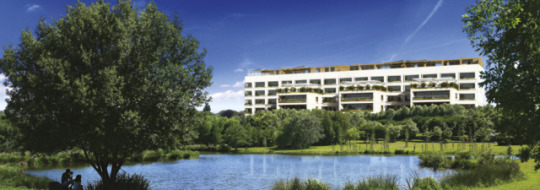
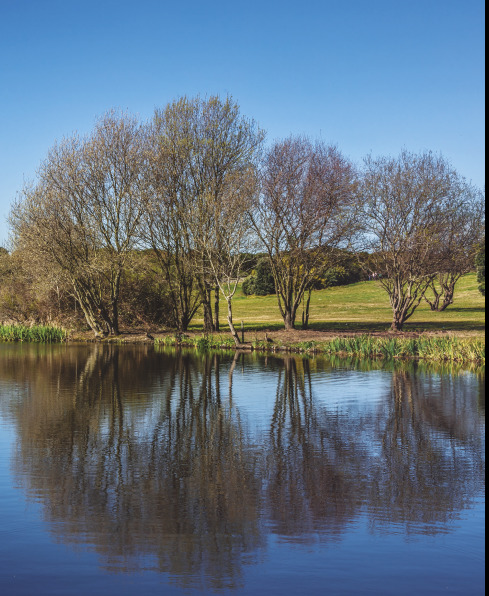
A quiet and reserved Port between the Atlantic and the City Park. Where the days breathing with another freshness.
Close to what really matters, in dialogue with nature. One step away from the lifestyle of the mouth, the glamour of high-end shops and boutiques of the Avenida da Boavista, art and culture of the Serralves Museum or house music, surrounded by essential services to daily life, schools and universities.
With a privileged view over the 83 hectares of green areas which extend to the Atlantic Ocean, ESSENZA offers another perspective. Considered by the Engineers as one of the "100 most notable works built in the 20th century in Portugal", the City Park — the biggest urban park of Portugal — stretches in front of your window and invites you to explore its corners in hiking, mountain bike or family picnics.
A dwelling planted in the green heart of the port, where you can breathe the breeze of beaches that run through the mouth or the fragrances in a sophisticated, architected to do this space, the natural refuge in your city, 460m2
1,6 Million €
0 notes
Text
When Architects Work for People, not Profit. Revolution and the Architecture Workers Movement in Portugal
The mission of Portugal's short-lived Serviço Ambulatório de Apoio Local to bring architects to the communities that needed them most is now more relevant than ever.
The period known in Portugal as the “Ongoing Revolutionary Process“ (25th April 1974- 25th November 1975) brought unprecedented visibility to the country’s underprivileged classes. Emerging in response to a military coup d’état, the people’s class consciousness was taken to the streets, with mass movements expressing a renewed awareness of their fundamental right to healthcare, food, education and quality housing. In order to support this grassroots political awareness, unveiled by the revolutionary event, public policies were put in place by the transitional government to meet the people’s demands.
Up until that point, large sections of the Portuguese population experienced dreadful housing conditions. Under the umbrella of a paternalistic dictatorship, exploitative labour conditions and strong pressure exerted by a privately-controlled housing market combined to force a substantial number of families to sub-lease meagre accommodation, live in ilhas (literally, ‘islands’: precarious units of collective housing built in the interior of urban blocks by the owners of the plots in order to increase rent extraction) or find residence in extremely dense communities of illegal shacks. Meanwhile, where the government did intervene, the policy was to relocate poor communities into newly developed areas on the urban periphery.
Under the revolutionary process, however, local communities were allowed to organize their demands in neighbourhood associations and housing co-ops, whose purpose was to reclaim decent accommodation financed by the state within the neighbourhoods they had called home for many years.
Decreed by then State Secretary for Housing and Urbanism, architect Nuno Portas, the SAAL (‘Serviço Ambulatório de Apoio Local’; translated as Mobile Local Support Service) aimed to provide these sections of the population with the means to design and build their own houses and communities. In order to meet this provision, the state became not only responsible for subsidizing the operations (in some cases, through non-repayable funds), but also for soliciting and remunerating so-called “technical brigades” composed of both architects and architectural students. These technical brigades would provide the requisite technical (and artistic) assistance to those communities.
This situation of dual power, wherein people on the streets were temporarily able to exercise power over and above the government, opened the window for an unprecedented democratic way of conceptualising and building the city. As far as citizens were concerned, it offered them a chance to escape the ruthless imposition of real estate, and to express their particular visions and ideas of a dignified city. For young architects, it gave them new opportunities to experiment on an urban scale. They were also able to restructure their social role, which had hitherto been trapped between the bourgeois affectations of the liberal architect and the technical bureaucracy that came with working for a centralized state apparatus. Last, but not least, for students, the situation represented the possibility for a ‘radical pedagogy’, as Joaquim Moreno puts it. It allowed them to overcome the limitations of the school and learn to build within a context where reality and ideology, political activity and disciplinary knowledge, objectivity and subjectivity, were refined dialectically. For that period, rather than being an institution of redundant protocols and canons, architecture became the universal right to a self-determined and dignified organization of space: a rich and multi-layered experience of concrete and collective expression, both on a disciplinary and political level.
With all that said, this process was only possible under specific historical circumstances. The revolution had temporarily brought capitalistic dynamics to a halt and reset the country on a path to socialism. On the one hand, large sections of the population were mobilized to unveil and denounce social contradictions. On the other hand, invested political agents, like Portas, proved to be agile enough to unlock the bureaucratic apparatus of the State, and direct it to the benefit of the people. However, after a counterrevolutionary turn, the legal ‘normality’ of the bourgeois state was gradually reinstated, and the SAAL operations ceased by decree on 26th October 1976, eventually opening the door to a new housing regime driven by state-subsidised financial credit.
This was the way the wind was blowing in the late seventies. After decades of global emancipatory political struggles, the world started to experience a ‘neoliberal turn’. Omnipresent free markets synchronized time and space all over the world. Labour became global, flexible, and mobile. The realms of extraction (e.g mining) and production (e.g. factory work) were systematically exported to poorer corners of the planet.
Meanwhile, the governments of developed countries gradually allowed markets to expand once more into housing and the reproductive sphere (characterised by work that nurtures and regenerates the workforce and activity that re-creates the existing economy). If in the previous framework of welfare states, production and reproduction were co-dependent and regulated to varying degrees by the state, in this new phase of economic development, full privatization became the order of the day. Housing went from a fundamental right to a stable and safe investment, for both domestic and foreign finance.
In Portugal, this paradigm had become fully entrenched by 2012, the year in which a right-wing government, controlled by the so-called European ‘Troika’ (composed of the European Commission, the European Central Bank and the International Monetary Fund) implemented austerity measures which included the liberalization of the rental market. In a sunny, quiet and inexpensive country, cursed by the sense of opportunity of big corporations such as Ryanair or Airbnb, this was a perfect recipe for profitable tourist-oriented urbanity, monopolized by private investment.
Some of the most recent statistics are essential to understand the scope of these policies. Take Porto for instance. Here, the government had made considerable public investments in the city’s public and transport infrastructure under the pretext of becoming European Capital of Culture in 2001. The resulting boost this gave to the local tourist trade, in turn, had the effect of increasing the potential land rent. Now, some neighbourhoods have become more than 50% tourist accommodation, with 57% of the houses in the city centre requiring the eviction of long-standing residents against their will. For an 80 m2 one-bedroom apartment, the average price is as much as €600 (precisely equivalent to the National Minimum Wage). Even the percentage of public housing owned by the municipality widely superior to the national average (13% against 2%) is insufficient to counteract this tendency. As growing sectors of the population, young and old, are deprived of a home of their own, the housing crisis has become as big a threat as low wages and unemployment.
On the flip side, the labour of those who plan and build the city has become a battlefield between productivity, profit and austerity. At the core of this dynamic, architects stand in a privileged position to understand the systemic nature of precarity. As it goes, not only is their labour exploited, but they are forced to act as agents of other people’s exploitation. In fact, a quick overview of any given Portuguese studio´s most recent output frequently reveals their active participation in the gentrification process, wherein they use their disciplinary background to prettify this dispossession: increasing the exchange-value of those houses, often through the application of materials produced on the other side of the world under substantially worse labour conditions.
João Paupério and Maria Rebelo
35 notes
·
View notes
Text
Preços de casas em Portugal
Em 2023, os preços de venda de casas em Portugal continental aumentaram 11,8%, representando uma desaceleração em comparação com o aumento de 18,7% registado em 2022. Os dados da Confidencial Imobiliário indicam uma diminuição na taxa de variação trimestral, que passou de 3,7% no terceiro trimestre para 1,6% no quarto trimestre, sendo esta última a taxa mais baixa do ano. Estes dados revelam que o mercado imobiliário continua bastante dinâmico.
Se quer investir em segurança e de forma tranquila, ligue comigo.Nos últimos anos tenho obtido excelentes resultados no investimento dos meus clientes.
Os contactos habituais: [email protected] Tel: +351 910502777

0 notes
Text
Lisbon - Day 8 - Walking Around
Friday 10/6
We are leaving Lisbon for Porto tomorrow and starting to prepare for our train trip. I came back to our apartment after emptying the garbage and our electronic front door wouldn’t unlock. Luckily MaryEllen was still inside. It is a keyless entry and for some reason the green light turned on after entering the correct code, but the door latch didn’t respond by unlocking. After about 1/2 hour of communication back and forth with our host and playing around with the lock, it started working again. The rest of the day we were concerned that the lock may malfunction again. Luckily the host provided us with a way to get a key to manually unlock the door if it failed again. So much for IOT (Internet of Things)!
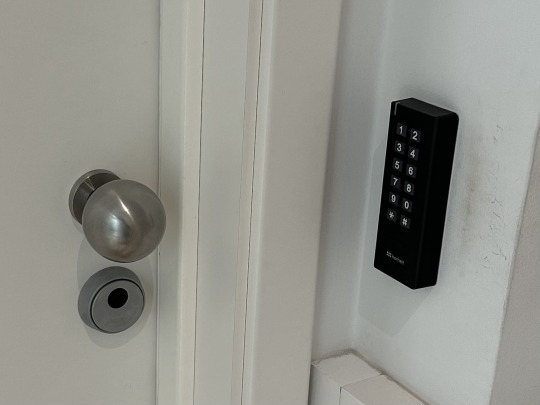
We need to buy our train tickets still for Porto. We attempted to do it online but the web site kept switching between English and Portuguese, making it very difficult to understand how to use the site. Since there was a train station two blocks from our apartment, we decided just to walk over and get our tickets there.
Today we walked up the tree-lined Avenida de Libberdade to the Parque Edwardo VII. Avenida Libberdade is where a number of upscale retail stores are located (eg, Rolex, Louis Vuitton, Guess, Boss), plus one of the areas where American expats tend to live.
Real estate is not cheap in Lisbon. This 4 bedroom 4 bath apartment with parking for 3 cars is for sale for $2.6 million.
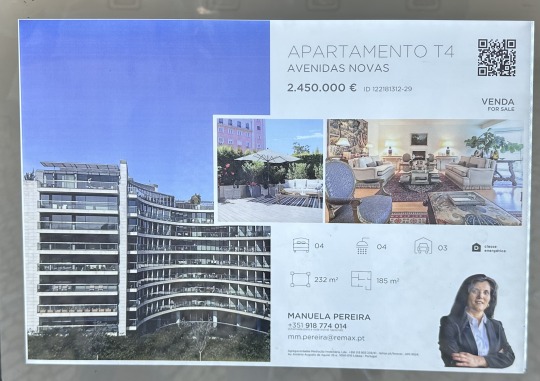
We stopped and had a picnic lunch under the trees at the edge of the park. After lunch we walked though the park. Supposedly there were two Pickleball courts there, but we couldn’t find them. We found the tennis courts, but no Pickleball. I guess we not moving to Portugal :-).
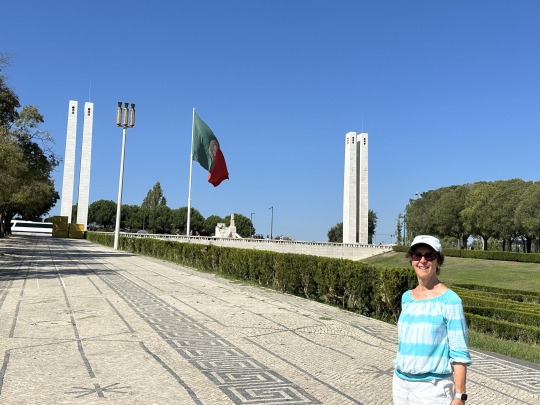
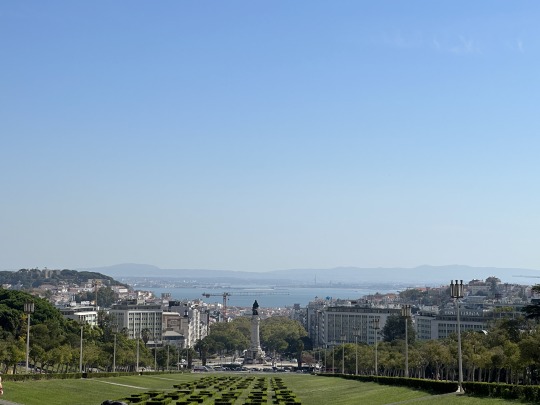
At the opposite end of the park was El Corte Ingles, a large seven story upscale department store. We went inside and found a luxurious selection of high-end designer merchandise, even surpassing that of Bloomingdale's in the US. It provided our first glimpse into the lifestyles of Lisbon's more affluent residents.
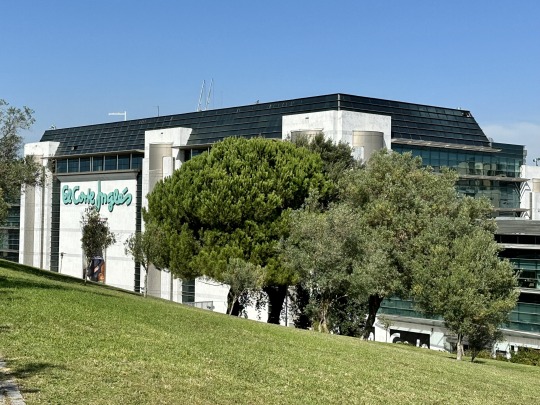
We then decided to continue walking in a new neighborhood so we could check out a restaurant that sounded good. We got lost a number of times even with the aid of Google maps. Below is some street art we saw along the way.

During our walk we saw some roosters struting around at a park we passed. In Portugal, the rooster symbolizes honesty and good fortune, stemming from the tale of the “Galo de Barcelos” (Rooster of Barcelos). This 17th-century legend tells of a man falsely accused of theft. He boldly proclaimed that a roasted rooster at the dinner table would crow at his execution to prove his innocence. Miraculously, the roaster rooster stood up on the serving plate and crowed, and as a result the man's life was spared.

Tuk tuks provide unique way to explore the Lisbon, especially with its narrow, hilly streets which are challenging for larger vehicles. Tuk tuks can be hired by tourists for guided tours around Lisbon.

Back at our apartment, we took one last view of of the Monumento aos Restauradores and the surround area just before sunset from our living room window.

For dinner we had chicken Peri Peri at Bonjardim Restaurante.
0 notes
Text
Beatriz of Castile, Queen of Portugal (Wife of King Afonso IV of Portugal)

Tenure: 7 January 1325 – 28 May 1357
Beatrice of Castile or Beatriz (8 March 1293 in Toro – 25 October 1359 in Lisbon), was an infanta of Castile, daughter of Sancho IV and María de Molina. She was Queen of Portugal from the accession of her husband, Afonso IV, until his death on 28 May 1357.

Daughter of Sancho IV and of María de Molina, Infanta Beatriz was born in Toro. She had six siblings, including King Fernando IV of Castile and Queen Isabel, wife of King James II of Aragon, and later duchess as the wife of John III, Duke of Brittany.
On 13 September 1297, when Beatriz was only four years old, the bilateral agreement, known as the Treaty of Alcañices, was signed between Castile and Portugal, putting an end to the hostilities between both kingdoms and establishing the definitive borders. The treaty was signed by Queen María de Molina, as the regent of Castile on behalf of her son, Fernando IV, who was still a minor, and King Dinis of Portugal. To reinforce the peace, the agreement included clauses arranging the marriages of King Fernando and Constança of Portugal and that of her brother, Afonso, with Beatriz; that is, the marriage of two siblings, infantes of Portugal, with two other siblings, infantes of Castile.
Beatriz abandoned Castile in the same year and moved to the neighboring kingdom where she was raised in the court of King Dinis together with her future spouse, Infante Afonso, who at that time was about six years old. Her future father-in-law "had inherited from his grandfather, Afonso X of Castile, a love of letters, literature, Portuguese poetry, and the art of the troubadours" and Beatriz grew up in this refined environment. Two of the Portuguese king's illegitimate sons, both important figures in the kingdom's cultural panorama, were also at the court: Pedro Afonso, Count of Barcelos, a poet and troubadour and the author of Crónica Geral de Espanha and the Livro de Linhagens; and, Afonso Sanches, the favorite son of King Dinis and a celebrated troubadour.
After the signing of the Treaty of Alcañices and upon their return to Portugal, King Dinis gave his future daughter-in-law the Carta de Arras (wedding tokens) which included the señoríos of Évora, Vila Viçosa, Vila Real and Vila Nova de Gaia which generated an annual income of more than 6000 pounds of the old Portuguese currency. After the marriage, these estates were increased. In 1321, her husband, who had not ascended to the throne yet, gave her Viana do Alentejo; in 1325, he gave her other properties in Santarém; in 1337, properties in Atalaia; in 1341, a manor house in Alenquer; in 1350, the prior of the Monastery of San Vicente de Fora gave her Melide, a manor house in Sintra; and later, in 1357, her son, King Pedro, gave her more estates which included Óbidos,

Atouguia, Torres Novas, Ourém:

Porto de Mós:

and Chilheiros.
The marriage was celebrated in Lisbon on 12 September 1309. Before the marriage could take place, a papal dispensation was required since Afonso was a great-grandson of King Afonso X of Castile through his illegitimate daughter, Beatriz of Castile (King Dinis’s mother and Afonso grandmother), and Beatriz, betrothed to Afonso, was a granddaughter of the same Castilian king. In 1301, Pope Boniface VIII issued the papal bull authorizing the marriage, but since both were underage, it was postponed until 1309 when Afonso was eighteen years old and Beatriz had turned sixteen. It was a fertile and apparently happy marriage. Four out of the seven children born of this marriage died in their infancy.

Like her mother-in-law, Isabel of Aragon, who had raised her as a child, during her marriage Beatriz played a relevant role in the affairs of the kingdom and was "the first foreign-born queen who was perfectly versed in the language and customs of Portugal which facilitated her role as a mediator of conflicts". She discreetly supported her husband when he confronted his father on account of his half-brother, Afonso Sanches. In 1325 after the death of King Dinis, Afonso "who had not forgotten former hatreds", demanded to be acclaimed king by the court and was responsible for having his half brother João Afonso killed, and his great rival, his other bastard brother, Afonso Sanches, banished to Castile".
When her husband and her son-in-law King Alfonso XI of Castile fought in the war that took place in 1336 – 1339, Beatriz crossed the border and went to Badajoz to meet the Castilian king to try to reach an agreement that would bring peace to both kingdoms, although her efforts proved to be fruitless. She sent her ambassadors in 1338 to the court of King Afonso IV of Aragon to strengthen the alliance between both kingdoms which had been weakened when her son, the future King Pedro I of Portugal, refused to marry Branca, a niece of the Aragonese king because of her proven "mental weakness (...) and her incapacity for marriage".
Queen Beatriz and Guilherme de la Garde, Archbishop of Braga, acted as mediators in the quarrel, which lasted almost one year and posed the threat of another civil war in the Kingdom of Portugal following the assassination of Inês de Castro, and in 1355, father and son reached an agreement.
On the religious front, she founded a hospital in 1329 in Lisbon and later, with her husband, the Hospital da Sé to treat twenty-four poor people of both sexes, providing the institution with all that was required for its day-to-day maintenance. In her last wills and codicil, she left many properties and sums for religious establishments, particularly for the Dominican and Franciscan orders, and asked to be buried wearing the simple robe of the latter order.
Beatriz and Afonso IV were the parents of the following infantes:
Maria (1313 in Coimbra – 18 January 1357), was the wife of Afonso XI of Castile, and mother of the future king Pedro I of Castile. Due to the affair of her husband with his mistress Leonor de Guzmán "it was an unfortunate union from the start, contributing to dampening the relations of both kingdoms";
Afonso (1315 in Coimbra), heir to the throne, was a stillbirth. Buried at the disappeared Convento das Donas of the Dominican Order in Santarém;
Dinis (12 January 1317 - 18), heir to the throne, died a year after and was buried in Alcobaça Monastery;
Pedro (8 April 1320 – 18 January 1367), the first surviving male offspring, he succeeded his father. When his wife Constança died in 1345, Queen Beatriz took care of the education of the two orphans, the infantes Maria and Fernando, who later reigned as King Fernando I of Portugal;
Isabel (21 December 1324 – 11 July 1326), buried at the Monastery of Santa Clara-a-Velha in Coimbra;
João (23 September 1326 – 21 June 1327), buried at the Monastery of São Dinis de Odivelas;
Leonor (1328 in Coimbra – October 1348), born in the same year as her sister Maria's wedding, she married King Pedro IV of Aragon in November 1347 and died a year after her marriage succumbing to the Black Death.
Queen Beatriz executed three wills and one codicil. She died in Lisbon when she was 66 years old and was buried at Lisbon Cathedral next to her husband as she had stipulated in her will.

While the definitive tombs were being built, the royal couple was originally buried at the choir of the church and it was not until the reign of King João I that their remains were transferred to the new sepulchers in the main chapel of the cathedral. These sepulchers were destroyed during the 1755 Lisbon earthquake and were replaced in the 18th century. The Livros do Cartóiro da Sé (Charters of the Cathedral) written between 1710 and 1716, describe the burial of Queen Beatriz, very similar to that of her husband, with an engraving that read: Beatriz Portugaliae Regina / Affonsi Quarti Uxor. (Beatriz Queen of Portugal, wife of Afonso IV).
29 notes
·
View notes
Photo
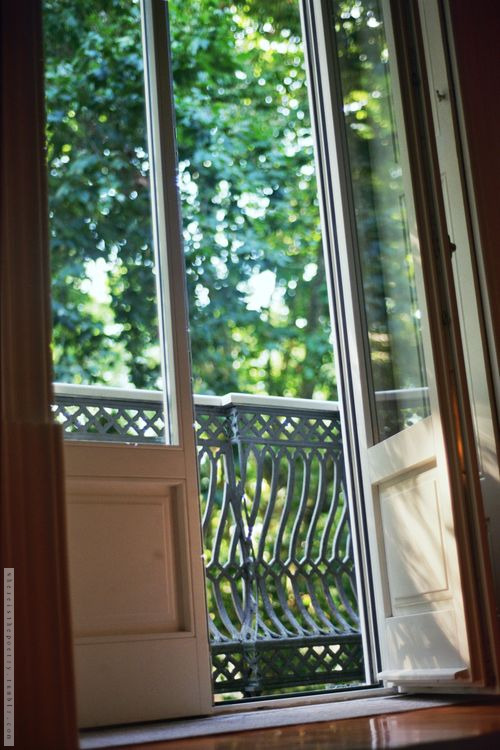
2018 - Portugal - Porto
Nikon F301 - ISO 400 - no colour correction
+
after almost two weeks on bikes and in tents we arrived in this beautiful city. we might have had a hotel reservation fall through... anyways, we managed to get an apartment online on short notice, though we had to wait a couple of hours to meet the landlord. living in your own muck is fine alright when your goal is a campsite. when having reached the end of the journey, i call it overrated. when he finally arrived it was the weirdest encounter: we - two really groggy, dirty dudes with huge bikes - wanted to clean up and lie down as quickly as possible, but this guy kept going on and on and on about how great this apartment was, when the house was built, that all the doors had been replaced, but not really replaced, made better, the interior decoration had been done by his ex, but his new girlfriend was way nicer, and anywho, how the location was amazing and really hip, that everything was to the highest standards. i might have had a slight sunstroke, but i simply could not cope with the waterfall of information rushing at me, because i only figured out later, when browsing the pamphlets lying on the kitchen table that he was selling the place. which i get even less tbh. how you could look at two guys stinking from bikepacking for days, and go, “yeah, those guys will definitely want to buy real estate” ... “even before taking a shower”.
anyway, now it’s a funny memory.
#ISO 400#35mm#analogue photography#film photography#Travel Photography#photographers on tumblr#window#portugal#porto#Nikon F301
5 notes
·
View notes
Video
youtube
PD1064 Apartamento T2, remodelado às piscinas de Águas Santas
Apartamento T2, remodelado às piscinas de Águas Santas, mais uma oportunidade para venda oferecida por A.S.S | Agentes imobiliários
Conheça melhor clicando no link https://ass-imobiliaria.pt/Imovel/37olvq
0 notes
Text
Portugal first apartment bought with bitcoin
Portugal first apartment bought with bitcoin
On Thursday, May 5, 2022, an apartment was purchased in Portugal with Bitcoin for the first time. The property in question, located in Braga, in the north of the country, near Porto, is selling for 3 BTC, or about $100,000.
Real Estate Sold Fully in Portugal for BitcoinThe Portuguese city of Braga, where the first bitcoin real estate transactions took place
The most important point of this event…

View On WordPress
0 notes
Text
Disappearing car lift in Quinta da Marinha villa
Quinta da Marinha House disappearing car lift, Lisbon Residence, Portugal Home, Portuguese Architecture Photos
Disappearing car lift in Quinta da Marinha house
14 February 2022
Design: Enter Arquitectura
Location: Cascais coast, near Lisbon, Portugal
The disappearing car lift for the modern villa surrounded by nature
A special home for a Ford Mustang Mach 1:
New building – Casa da Quinta da Marinha
Disappearing car lift in Quinta da Marinha villa, Portugal
Along the Cascais coast, on the west side of Lisboa and inside the Sintra Natural Park, a wonderful modern villa set in the typical landscape of the Portuguese Riviera was developed: the Casa da Quinta da Marinha.
The area, famous for its grand estates, palaces and luxury villas which gained Sintra a UNESCO World heritage designation, is one of the most expensive and exclusive real estate markets and is similarly known for its high standards of living, consistently ranking as one of the best places to live in Portugal.
The villa, designed by Enter Arquitectura, was based on a logic of well-defined vertical planes that structure and organize the house’s interior spaces and which in turn release the two horizontal levels that extend to create a game of interior and exterior spaces.
The materials and colours used were chosen to achieve perfect harmony with the surrounding environment. Similarly, the access to the underground garage was designed with the aim of minimising the visual impact, so the architects chose to install a disappearing car lift IP1-CM MOB by IdealPark.
The car lift becomes an alternative solution to the ramp, combining functionality and aesthetics while preserving and dedicating all the outdoor space to gardens or courtyards.
The lid of the lift is covered with the same material as the surrounding area, thus contributing to a completely invisible result. It is also driveable and can be used as an additional parking area.
Ford Mustang:
The installation of a video surveillance system and a virtual protection perimeter with photocells has made it possible to leave the space around the car lift free from unsightly fences.
Thanks to the IdealPark car lift the owner of the villa can park his classic car safely and comfortably in the underground garage.
Video of the project:
youtube
Quinta da Marinha House Lift in Cascais, Lisbon – Building Information
Project: Enter Arquitectura – www.enterbxl.com
Car lift: model IP1-CM MOB – www.idealpark.com
Car lift supplied and installed by: Ascensores do Oeste, IdealPark dealer in Portugal – https://ift.tt/UI9Nd4K
Photo and video di: Nortfilmes – www.nortfilmes.pt
Disappearing car lift in Quinta da Marinha villa images / information received 110222
Location: Cascais, Lisbon, Portugal, south western Europe
Portuguese Architecture
New Portuguese Buildings
Portugal Architecture Design– chronological list
New Portuguese Architecture
Portugal Building News
Calçada House, Vila de Paraíso, north of Portugal
Architects: Ren Ito Arq
photography : Ivo Tavares Studio
Calçada House, Porto
Aneto Restaurant, Peso da Régua
Design: João Abreu
photography : Ivo Tavares Studio
Aneto & Table Restaurante, Peso da Régua
Senhora da Hora, Porto
Architects: Raulino Silva
photography : João Morgado
Senhora da Hora House
Coimbra – Steinman House, Lisbon
Design: Fran Silvestre Arquitectos
picture from architects office
Contemporary House in Lisbon
Portugal Buildings
Contemporary Property in Portugal – architectural selection below:
Portuguese Office Buildings
Portuguese Houses
Portuguese Architect Studios
Comments / photos for the Disappearing car lift in Quinta da Marinha villa building design by Enter Arquitectura page welcome
The post Disappearing car lift in Quinta da Marinha villa appeared first on e-architect.
0 notes